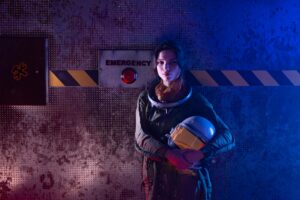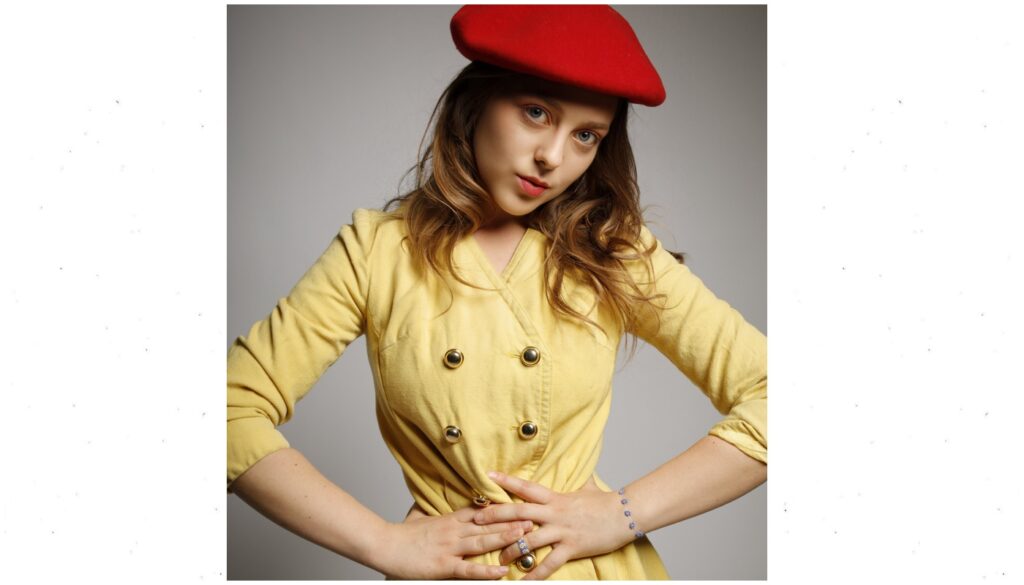Art and Science are two knowledge domains that have always been complementary in innovation and discovery. Over the past few years, dancing theatre and neuroscience have come closer to each other, which makes this genre even more interesting as it concerns human cognition, emotions, and well-being. Performer and scholar Fabiani Franca is leading this exciting new trend, striving to break down the walls between performing arts and mental health initiatives.
Fabiani studied psychology and social work, giving her a different approach to dancing theatre performances. Her academic background and certification in Physical Theatre have made her ready to discover the relationships between movement, mood, and mind.
Today, it is our great privilege to interview Fabiani about her work and her outlook on further developing this relatively new discipline.
- Your work is quite specific and it falls under the category of the dancing theatre and neuroscience. In your opinion, how and when did you first realize the possibility of the connection between these two rather unrelated fields?
To be honest, I have never viewed these fields as independent from one another. However, since my introduction to neuroscience, I’ve observed that the actors in dance theatre and neuroscience are quite disconnected and interact very little. A similar disconnect exists between psychology and social work. Both fields analyze similar issues from different perspectives, yet the questions are rarely examined together. Having gained insight into dance theatre, psychology, and social work, I see great potential in multidisciplinary approaches, where synergies can emerge. For example, I see great potential in projects for young people focusing on emotional regulation. Emotions like sadness and anger are similar to feelings of hunger. We need to learn to recognize them, understand what we need, and respond appropriately. Additionally, we need a context that provides the resources to meet those needs. In this way, hunger is no more dangerous than anger or fear. In a research interview on the support needs of children and adolescents, a psychotherapist shared findings on social inequalities. She observed that the ability to manage emotions depends on how it is taught within the family or social environment, as there are few institutional offerings, such as schools, that teach children and adolescents how to handle emotions effectively. The way one manages emotions, in turn, influences the likelihood of developing mental health disorders, contributing to social inequalities regarding mental health. By implementing structured interventions focusing on emotion regulation based on dance theatre methods, these inequalities can be addressed.
2. Could you please explain how your education in psychology and social work tradition contributes to developing dance theatre productions?
The insights from psychology and social work serve as both inspiration for the themes I want to explore in dance theatre pieces and as an awareness of the socio-structural relevance of dance theatre in society. For example, one of my future projects is to develop a piece on the experiences of psychosis. In doing so, I can incorporate neurobiological knowledge about neural or hormonal changes. This allows academics to share their research with a wider audience, preventing their papers from gathering dust in databases. I am also mindful of the societal impact of who is given a platform to express themselves. Are only academics without lived experience of psychosis speaking, or is there space being for a broader societal discourse that includes diverse perspectives? By working with well-trained dancers and choreographers, the project also meets the artistic expectations of a professional production while offering a compelling, stand-alone experience. This approach helps create a societal space that can ultimately enrich many people.

3. Now, you are in the process of creating dance theatre pieces based on academic research, as was mentioned regarding the neuroscience area of knowledge. Can you give an example of how you would apply complex scientific concepts to movement or performance?
When translating scientific concepts into performative ones, it’s essential to keep the “logic” of each world in mind. For example, I collaborated with a jazz composer to develop a piece that translated knowledge about panic attacks into an audiovisual experience, making it accessible for the audience. In psychology, there are visual representations of the generalized progression of panic attacks. We translated these visuals into a graphic score for musicians and later shared it with movement artists. The artists interpreted the graphic score using their specific techniques, creating a journey for both performers and the audience that encouraged conversation around the experience of panic and coping strategies. The goal of such translation is to convert insights into a different language while keeping the objectives in focus: An enriching experience and access points for the discourse.
- Your psychoeducational interventions include artists, psychotherapists, and young people. What difficulties and benefits have you experienced in integrating these diverse groups?
One of the main challenges is raising awareness of the potential in combining these fields. Each group operates within its own world, making the primary challenge to create common spaces for collaboration. At the same time, I experience a great deal of enthusiasm from all three groups when I, for example, discuss the potential of art projects with psychotherapists or share neuroscientific insights with young people and artists. The goal is to build structures that facilitate exchange. As I mentioned earlier, I see great potential in the exchange around emotions. Adolescence is well-known as a phase where we experience many emotions. Similarly, both artists and psychotherapists engage deeply with emotions. To describe it figuratively: some live in the sky, flying through the air and explaining how the wind moves us in different directions, while others swim with the fish underwater, interpreting how the waves toss us through life. We need a few flying fish and diving ducks to bridge these worlds to create a more holistic picture of the universe.
5. What do you think the future developments of your work will have on the performing arts and mental health?
I am convinced that both the arts and many actors in both fields will benefit from the synergies created by connecting these two worlds. Knowledge about mental health can serve not only as inspiration for performances but also support artists in their processes, enabling them to work on their themes in the long term. At the same time, art can help reframe academic insights into mental health and share them with others, whether through stage performances or dance theatre workshops with young people. In this way, important topics like social inequality regarding mental health can be addressed with humour and enthusiasm.









